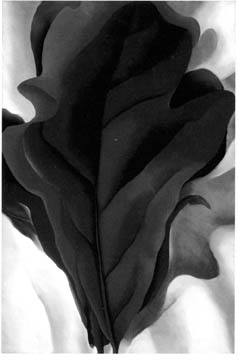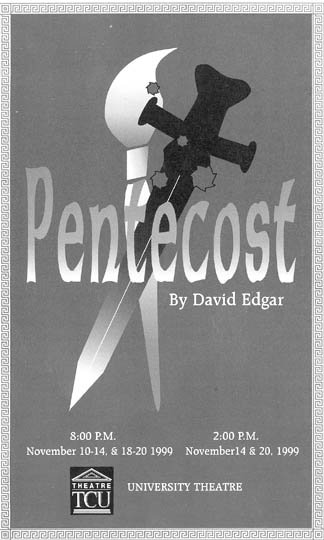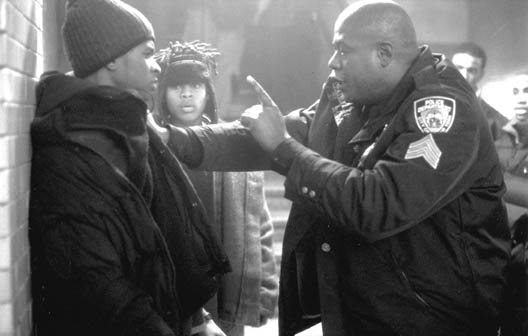By Laura Head Opinion Editor Moke is a joke. In its self-titled debut album released in August, Moke combines rock-n-roll with blues-n-funk, but the band lacks a specific identifying sound. And because its songs sound like every other song we hear on rock stations, the album is easier for listeners to tune it out than to tune it in. In October 1996, four South London men came together to create Moke, with John Hogg on vocals, Sean Genockey on guitar, Alex Evans on bass and keyboard and John Morgan on drums. They signed to England's Dorado Records and then to U.S. Indie label Ultimatum Music. They have played more than 200 shows, including their performance as one of the opening acts for the Goo Goo Dolls last week at Daniel-Meyer Coliseum. Moke also opened for the Black Crowe's "Souled Out" Tour 1999. Although the album is dull at best, it is a good attempt at catering to various music groups. "Down," the only single released from the album, and "Leather Drag" tease with almost folkish introductions, but each give way to heavier guitar playing about 30 seconds into the song. "Down," however, does a better job of returning to its original sound after the brief stint in the land of rock music. And "Leather Drag" is just that - a drag. The beat of the song leaves you tapping your foot, not in the this-is-a-great-song kind of way, but in the maybe-if-I-tap-my-foot-a-little-faster-the-song-will-speed-up kind of way. On the album's playlist, "Mislaid the Key" is listed as the fourth track. But No. 4 is actually the sound of a strumming guitar and someone humming in the background. "Mislaid the Key" is really on the third track following "Another Weekend." There's no need for tricks like that, just like there's no need for hidden tracks on any other group's albums. Moke's selection of lyrics seem to be chosen solely for the rhyme, as is evident with the lines, "I can feel it creeping, sleeping and stealing up on me/ I can read it from the air/ Everyone will come aware" from "Powercut." Maybe if the London lads would choose one sound and stick with it, they could work on excelling in that one area. As it is now, they've spread themselves so far across the boundaries between rock and blues and punk that their performance is less than par in all areas. Moke is a band with rockstar potential, but it hasn't quite found its niche yet.
By Pam Woodhead Weekend editor Have you got Georgia on your mind? I did, after seeing the television commercials flash pictures of some truly beautiful, vivid paintings. The Dallas Museum of Art is currently hosting an exhibition titled, "Georgia O'Keeffe: The Poetry of Things," and it is worth far more than the ticket price.
Everything in the exhibit is beautiful in its own way, but when I saw O'Keeffe's paintings of flowers, it was love at first sight. She uses such bold, bright colors that the paintings seem like huge, live flowers. O'Keeffe's artistic genius reveals itself when you compare her similar works, such as "Red Canna" and "Poppy." The deep reds and oranges of "Red Canna," an abstraction of a canna lily, give the impression of flames licking out from the center of the flower toward the top of the painting. While "Poppy" uses the same colors, this painting gives the viewer a much different idea. The cool black center, with a dark green accent, imbues "Poppy" with a colder sense than "Red Canna." This piece smolders while the other rages. In similar fashion, O'Keeffe presents two different views of the petunia. "Petunia II" is a flower of the daylight, with pale purples and vivid greens that light up the canvas. Conversely, "Black and Purple Petunias" features much darker flowers. Rich, deep violet gives this piece a velvety appearance, and a single stroke of blue across one of the petals makes the flower glow. O'Keeffe's beautiful flowers share the exhibit hall with various other themes, the most prevalent being the Southwest. Creamy bones stand in stark contrast to the bright blues of desert skies in such pictures as "Pelvis with Pedernal" and "Pelvis with the Distance." O'Keeffe saw bones as objects of beauty rather than reminders of death, and she once said the Southwest "fitted me perfectly."
This ambiguity is classic O'Keeffe, who delights in playing with point of view. Several of the displayed paintings demonstrate this aspect, including "Fishhook from Hawaii No. 1," which features a hook floating above a loop of fishing line acting as a lens to distort the horizon, and "Gray Cross with Blue." When I first saw "Gray Cross with Blue," I was tempted to move on after a cursory glance, but then something about the painting caught my eye. Though the background is done in dark blue hues, there are streaks of white on the gray cross, indicating a light source coming from an unseen source. O'Keeffe's art is full of mystery and life, and it is a treat for anyone who loves art, beauty or the ideal combination of the two. The DMA is offering the exhibit through the end of January, so make plans to visit over the holidays. It will be a gift for your eyes. For more information, call the DMA at (214) 922-1200.
By Sarah Mullen staff reviewer The discovery of a fresco that would alter some of the fundamental principles of art history sparks a chain of events in "Pentecost," a play performed by TCU theater students, that showcases man's inhumanity to mankind. Gabriella Pecs (Holly Smith) seeks assistance from Dr. Oliver Davenport (Kirk A. Holland) in removing and preserving a remarkable fresco from the wall of an antiquated church in an unidentified Balkan village. Their efforts are thwarted by a number of characters who want the fresco to stay where it is. Among those characters is Leo Katz (Michael Chase), a somewhat cynical art expert from Ithaca, N.Y., brought to the village at the request of a local priest.
Yasmin (Nikki Gonzales), the leader of the refugee group, is angry about how she and the other refugees are forced to wander aimlessly and suffer severe mistreatment from unwelcoming governments and hostile citizens. During the standoff, Gabriella, Oliver and Leo learn about the plight of the refugees and more about the cruel, vicious side of human nature. This exciting finale is well worth the wait. The first act is almost intolerably slow, particularly the opening dialogue between Gabriella and Oliver. The forced accents make their lines almost unintelligible. Audience members may be well into the second or third scene before finally gaining some understanding of the conflict. The first act was saved with the entrance of Leo, the refreshingly straightforward New Yorker. The intricacies of the plot finally came to light thanks to the clear and concise dialogue between Leo and the others. The handful of people who didn't return after the intermission missed out on a stellar second act. The individual stories of the refugees were intriguing and convincingly portrayed. Theatergoers are in for a compelling depiction of man's inhumanity to other men. "Pentecost" will also be performed at 8 p.m. Nov. 18 to Nov. 20 and at 2 p.m. Nov. 21 in the University Theater. Tickets are $5 for adults, $3 for children and free to students who present their student ID. For more information, call 257-7550.
By Guy Bickers staff reviewer The world of home entertainment has changed dramatically in the last few years. In the 1980s, a TV and VCR were enough to enjoy a flick at home. If you were lucky you got hold of a laser disc player and hooked it up to your stereo. In the '90s, however, a true home theater requires a lot more thought than most people think. Electronics have become the dominant fixtures in many homes: TVs have gotten bigger, cable has a real audience, pay-per-view is actually affordable and you can watch movies that look better at home than they did in the theater. But where to begin? The first thing to do when designing your home theater is to decide where you're gonna put it. In an apartment or dorm room, you likely won't have much choice. But there are a few simple rules to follow: 1) Don't put your TV across from a window unless you have a really dark, thick curtain. 2) Make sure there are power sockets near where you plan to install everything and make certain they're grounded. 3) Try to keep away from air ducts because audio/video components are very sensitive to dust. 4) Don't smoke around your components: The tar and residue from the smoke collects on lasers and coats speakers, causing potential problems. Next, you need to decide if you need a new TV or not. That 13-incher from your dorm ain't gonna cut it. Most experts recommend at least a 27-inch set for serious movie watching. I recommend at least a 32-inch. "Home Theater" means watching movies in widescreen (yes, the black bars are supposed to be there), and widescreen means big TVs. Go to specialty shops to look at good sets, then go to Best Buy to buy one you can afford. (Tip #1: Find a nice set and keep your eye out for a sale price. If you go back after the price has gone back up, the store manager will still give you the sale price. They just want your money.) Now ask yourself how much you are willing to spend. Do you want everything at once, or are you willing to build over time? (The latter route is annoying, but the payoff is much greater.) Do you need a DVD player? What about a CD changer? Dolby Digital or Pro-Logic? What about a subwoofer? Write down a list of items before you head out to buy and stick to it. You can always add later. (Tip #2: Comparison shop. Talk to a lot of salesmen and ask a lot of questions. Hit the Web for more information so you don't get duped.) So you've decided how much money you're gonna throw into your new project and discovered that you will have plenty of room once you get your roommate kicked out. Where do you go? Here it gets tricky. I found it helpful to start at the high-end (expensive) specialty shops. They know about each of their products and know which parts work together and which do not. Make it clear that you aren't going to buy anything immediately; that takes salesmen out of commission-seeking mode. The majority of people in the hi-fi shops genuinely want to help you and will be very upfront with you. The other way to go is to start with the big places such as Best Buy, Circuit City and the like. When dealing with these places I must say: Buyer beware. If you choose to start here make certain you know exactly what you are looking for. The salesmen generally know very little about what they sell and are only really interested in getting you to buy a warranty plan. (Tip #3: Extended warrantees are generally useless. If something like a DVD player is gonna croak, it's gonna happen really early, during the manufacturer's warranty period.) Now there is one rule of home theater shopping that is unforgivable to break: If a salesman in a high-end shop helps you a lot, and you decide to buy a piece of hardware he showed you, DO NOT buy it elsewhere. That's rude. He helped you not get conned; he deserves your money more than another store! Once you've found everything you wanted, or could at least afford, it's time to get everything home. You have a few choices here as well: Wait for delivery and hope nothing gets broken, load it all into your Sedan and hope nothing gets broken or load it all in your friend's truck and hope nothing gets broken. Everything's set up, but you realize you didn't get any audio/video cables to hook it all up. Your best bet is to head to Radio Shack and find quality cables at a reasonable cost. They sell excellent speaker cable for around $15 for 50 feet. Video cable is a bit pricier, but you wanna go with some of the gold-plated kind. They really are worth the extra price. Grab a good surge protector while you're at it. The single most useful piece of equipment you can buy might be a bit of a surprise: a universal remote. I don't mean one of those el cheapo kind from Sam's. If you're serious about building your own theater, you'll want to get a good programmable remote from a specialty shop. The price'll shock you (look to spend around $200 or more) but it is DEFINITELY worth it. (Tip #4: You're gonna lose a remote at some point. Accept it and move on.) Now that you know what to do, where to buy? My personal favorite place is Marvin's Electronics off Hulen, across from Stonegate. The guys there are incredibly knowledgeable and treat you well no matter how you are dressed. They have something for every price range and are happy to help you find whatever is best for your dollar. Well, there you have it: Home Theater 101. Once you get a system set up to your liking, you'll have a hard time watching your friend's 13-inch TV-VCR ever again.
By Allan Schwegmann staff reviewer Look up to where the ceiling and the wall meet. Stare at it for a while. Exciting? Well, it's a lot more exciting and dimensional than the characters and plot in "Light it Up." At least the ceiling is real. From the first 10 minutes of the film, the dialogue is practically a joke, sounding like someone in his 40s, with no knowledge of high school students or their problems, picked up a copy of the Ebonics dictionary and tried to recite every word from it. We hear "yo," "G," "dawg" and the beloved "n-word" countless times. The film begins by showing the harshness of Lincoln High, a school where broken windows are not fixed, there are more students than textbooks and the principal does not care about his students or teachers. For instance, Ziggy, one of the film's stereotypical characters, is drawing while sitting in the middle of the hall between classes. This is something he loves, but the audience can see he is terrible at it.
Meanwhile, Stephanie (Rosario Dawson), whose character is a carbon copy of Jessie from "Saved by the Bell," is head of the student government, which is trying to get books and a career day, but, of course, is not allowed to have anything. To make matters even worse for these ridiculous characters, the school's best teacher (Judd Nelson) is fired for virtually no reason. So what do you do in a situation like this? Petition the school board? Get parents in the PTA involved? Of course not - you shoot a cop in the leg and take him hostage. Everyone leaves the school except for the above characters, along with a few others including Lynn (Sara Gilbert), who doesn't hear the gunshots because she's in the library with her Walkman on and smoking a cigarette. The fuchsia-haired Lynn is in quite the predicament, given the fact everyone makes fun of her weight and looks. And she is pregnant. Soon, Audrey (Vanessa Williams), a hostage negotiator, is brought in to settle the situation, but no one will listen to her either, since she is oppressed by "The Man" due to her gender and race, like everyone else. She is upset about the situation even more because she learns that Lester's father was randomly beaten to death and shot by two cops coming back from getting ice cream, and his family was not compensated. Sound pretty realistic, doesn't it? The film drones on with its characters, all of whom we have seen in "Dangerous Minds" and "The Breakfast Club." The movie tries so hard to make a point that it fails to do so. No public school in a big city has a situation as bad as this. Perhaps if the filmmakers toned everything down and did not try to make everyone in the audience mad, it might have a decent message. The ending tries even harder to be more dramatic, but it had the opposite effect because it had me in the aisle rolling hysterically with laughter. The bottom line? Don't waste your time. Don't even wait for it on cable. |
| The TCU Daily Skiff © 1998, 1999 Credits |
 For an $8 student rate or a $10 adult price, visitors to
the museum are equipped with an audio headphone set and given free rein
to wander through rooms filled with 55 paintings, watercolors and other
works on paper. These pieces include the artist's most well-known images
of flowers, bones, trees, shells and the Southwest.
For an $8 student rate or a $10 adult price, visitors to
the museum are equipped with an audio headphone set and given free rein
to wander through rooms filled with 55 paintings, watercolors and other
works on paper. These pieces include the artist's most well-known images
of flowers, bones, trees, shells and the Southwest. "Pelvis with the Distance" makes the viewer question
what he or she is looking at and what the sizes are of the objects pictured.
The bones rise up in the foreground of the painting, leaving the shadowy,
blue mountains behind them. On closer inspection, though, the bottoms of
the bones seem to be placed at the base of the mountains, making it unclear
whether they are indeed in the foreground or if they are really as large
as they appear.
"Pelvis with the Distance" makes the viewer question
what he or she is looking at and what the sizes are of the objects pictured.
The bones rise up in the foreground of the painting, leaving the shadowy,
blue mountains behind them. On closer inspection, though, the bottoms of
the bones seem to be placed at the base of the mountains, making it unclear
whether they are indeed in the foreground or if they are really as large
as they appear. While Gabriella, Oliver and Leo are in the
church bickering over the intent of the artwork, a group of displaced refugees
enter the building and take the three of them hostage along with Toni Newsome
(Courtney Robinson), an Englishwoman.
While Gabriella, Oliver and Leo are in the
church bickering over the intent of the artwork, a group of displaced refugees
enter the building and take the three of them hostage along with Toni Newsome
(Courtney Robinson), an Englishwoman. Dante Jackson (Forest Whitaker), the school's new security
guard, asks him to stop and move on. Naturally, pushing comes to shoving
and a fight breaks out. Ziggy's best friend, Lester (Usher Raymond) helps
to escalate the fight.
Dante Jackson (Forest Whitaker), the school's new security
guard, asks him to stop and move on. Naturally, pushing comes to shoving
and a fight breaks out. Ziggy's best friend, Lester (Usher Raymond) helps
to escalate the fight.